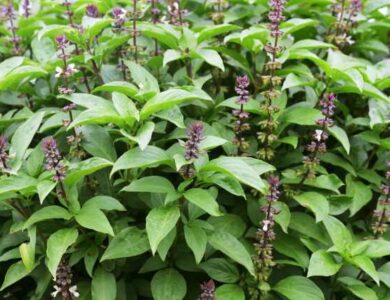Why Millions Chant Hanuman Chalisa: Discover the Transformative Power in Every Verse

In the heart of every aspiration, every dream, lies a hidden obstacle. It may be a mountain of self-doubt, a thicket of fear, or a river of negativity threatening to extinguish the flames of ambition. For centuries, Hindus have found solace and strength in a devotional tapestry woven with love and determination – the Hanuman Chalisa. This vibrant hymn, more than just verses, unlocks inner doors and grants wings to soar above life’s hurdles.
Hanuman, the embodiment of unwavering devotion and boundless optimism, inspires through his actions. He leapt across oceans, scaled celestial heights, and faced demons with a grin, his strength fueled by his unwavering loyalty to Lord Rama. The Hanuman Chalisa, penned by Goswami Tulsidas, captures this essence, painting a vivid portrait of Hanuman’s journey and illuminating the path for those seeking success.
The auspicious “Manglacharan,” invoking blessings upon Rama, Sita, and Hanuman, sets the stage for transformation. As you delve deeper, each Chaupai (verse) becomes a mantra for resilience. Words like “Durya dalan kar bhay manko” shatter fear, while “Sumar kar Pauvan kanth rajjah hoyat” remind us that remembering Hanuman imbues us with his regal might.
But the Chalisa’s power goes beyond battling external obstacles. It tackles the demons within. Verses like “Jo sat karega prabhhu se hoyi hai mein” declare that true success lies in aligning with righteousness, while “Kripa Kariye Hanuman mujpe daya” plead for Hanuman’s grace to overcome our own shortcomings.
Chanting the Chalisa isn’t merely reciting words; it’s an immersive experience. Imagine Hanuman, his wind-swift grace, his resolute gaze, as you utter each syllable. Feel his strength mingle with yours, his optimism wash away doubt. Each repetition becomes a brick in the bridge that spans the chasm between potential and achievement.
There’s no “best” time to chant the Chalisa. Its magic lies in its accessibility. Sunrise, with its promise of new beginnings, is ideal for invoking Hanuman’s fiery spirit. Sunset, a time for introspection, finds resonance in Hanuman’s unwavering devotion. But truly, any moment dedicated to the Chalisa becomes sacred.
The benefits are myriad. Studies have shown chanting reduces stress, improves focus, and fosters a sense of calm. But the true value lies in the transformed perspective. Obstacles no longer appear insurmountable, but stepping stones in Hanuman’s footsteps. Success isn’t measured by material gains, but by the unwavering pursuit of righteousness and the courage to face challenges with a smile.
So, open your heart, raise your voice, and let the words of the Hanuman Chalisa wash over you. Let it be your armor against negativity, your compass towards virtue, your wings to rise above limitations. For in Hanuman’s presence, there are no insurmountable obstacles, only opportunities for flight.
Go forth, chant, and conquer. May the spirit of Hanuman guide you towards a life of success, defined not by worldly possessions, but by the strength of your spirit and the purity of your soul.
Hanuman Chalisa Chanting Time and Repetition: Fact vs. Tradition
While traditions and beliefs may vary about chanting the Hanuman Chalisa:
Chanting Time:
No specific restriction: Contrary to popular belief, the Hanuman Chalisa can be chanted any time of the day. However, specific times are often associated with different benefits:
Morning: Believed to bring positivity and success throughout the day.
Evening: Helps overcome negativity and promotes peaceful sleep.
Tuesday and Saturday: Considered auspicious days for Hanuman worship.
Ultimately, devotion and sincerity outweigh the timing. Chant when you feel most connected and focused.
Number of Repetitions:
No prescribed number: While some chant once, others recite 7, 11, 21, 108, or even more times. These numbers often hold symbolic meanings in Hinduism.
Focus on quality over quantity: Chanting with concentration and devotion is more impactful than mere repetition.
Here’s an additional perspective:
Consider your purpose: For specific wishes or blessings, specific rituals may exist. Consult religious texts or spiritual leaders for guidance.
Consistency matters: Regularly chanting, even once a day, is more beneficial than occasional marathons.
Remember, faith is key: Hanuman responds to sincere devotion, regardless of timing or repetition.
Ultimately, the best time and number of repetitions for chanting the Hanuman Chalisa depend on your personal beliefs, preferences, and circumstances. Experiment, find what resonates with you, and most importantly, chant with dedication and love.
Preparation:
Create a sacred space: Find a quiet, clean area where you won’t be disturbed. Light a lamp or incense if you wish.
Cleanse your body and mind: Take a bath or shower, wear clean clothes, and meditate for a few minutes to calm your mind.
Focus on your intention: Be clear about what you wish to achieve through your chanting. Is it seeking guidance, overcoming obstacles, or simply expressing your devotion?
Chanting:
Pronunciation: While perfect pronunciation isn’t essential, try your best to speak clearly and articulate the words. Listen to recordings of experienced chanters to improve your pronunciation if desired.
Concentration: Avoid distractions during your chanting. Put your phone away, close your eyes if comfortable, and focus solely on the sound of your voice and the meaning of the words.
Visualization: As you chant, imagine yourself in the presence of Hanuman. Picture his form, his strength, and his compassionate gaze. See him blessing you and granting your wishes.
Feel the emotion: Let the words of the Chalisa resonate in your heart. Feel the gratitude, the reverence, the love for Hanuman and for the divine. Don’t be afraid to shed tears if they come naturally.
Additional practices:
Fasting: Some devotees choose to fast before or during their chanting, especially on Tuesdays and Saturdays.
Offering: Prepare a simple offering of flowers, fruits, or sweets to Hanuman before or after your chanting.
Japa mala: Use a rosary of 108 beads (japa mala) to keep track of your repetitions and focus your chant.
Remember:
Sincerity is key: The most important ingredient in chanting is your genuine devotion. Don’t worry about following any specific set of rules or rituals perfectly. Your true feelings will reach Hanuman.
Consistency is valuable: Regular chanting, even for a short time each day, is more impactful than occasional long sessions.
Enjoy the process: Let the chanting be a source of joy and peace for you. Don’t focus on achieving any specific outcome. The benefits will come naturally with sincere devotion.
Hanuman Chalisa in English (Text)
Doha
Shri Guru Charan Saroj raj Nija manu Mukura sudhari
Baranau Raghuvar Bimal Jasu Jo Dayaku Phala Chari
Budheeheen Tanu Jannike Sumiro Pavan Kumara
Bal Buddhi Vidya Dehoo Mohee Harahu Kalesh Vikaar
Chaupaii
Jai Hanuman gyan gun sagar
Jai Kapis tihun lok ujagar
Ram doot atulit bal dhama
Anjani putra Pavan sut nama
Mahabir vikram Bajrangi
Kumati nivar sumati Ke sangi
Kanchan varan viraj subesa
Kanan Kundal Kunchit Kesha
Hath Vajra Aur Dhwaja Viraje
Kaandhe moonj janeu saaje
Sankar suvan kesri Nandan
Tej prataap maha jag vandan
Vidyavaan guni ati chatur
Ram kaj karibe ko aatur
Prabhu charitra sunibe ko rasiya
Ram Lakhan Sita man Basiya
Sukshma roop dhari Siyahi dikhava
Vikat roop dhari lank jalava
Bhim roop dhari asur sanhare
Ramachandra ke kaj sanvare
Laye Sanjivan Lakhan Jiyaye
Shri Raghuvir Harashi ur laye
Raghupati Kinhi bahut badai
Tum mama priya Bharat-hi-sam bhai
Sahas badan tumharo yash gaave
As kahi Shripati kanth lagaave
Sankadhik Brahmaadi Muneesa
Narad Sarad sahit Aheesa
Yam Kuber Dikpaal Jahan te
Kavi kovid kahi sake kahan te
Tum upkar Sugreevahin keenha
Ram milaye rajpad deenha
Tumhro mantra Vibheeshan maana
Lankeshwar Bhaye Sab jag jana
Yug sahasra yojan par Bhanu
Leelyo tahi madhur phal janu
Prabhu mudrika meli mukh mahee
Jaladhi langhi gaye achraj nahee
Durgam kaj jagat ke jete
Sugam anugraha tumhre tete
Ram duwaare tum rakhvare
Hot na agya binu paisare
Sab sukh lahai tumhari sarna
Tum rakshak kahu ko darna
Aapan tej samharo aapai
Teenon lok hank te kanpai
Bhoot pisaach Nikat nahin aavai
Mahavir jab naam sunavai
Nase rog harae sab peera
Japat nirantar Hanumat beera
Sankat se Hanuman chhudavai
Man Kram Vachan dhyan jo lavai
Sab par Ram tapasvee raja
Tin ke kaj sakal Tum saja
Aur manorath jo koi lavai
Soi amit jeevan phal pavai
Charon jug partap tumhara
Hai parsiddh jagat ujiyara
Sadhu Sant ke tum Rakhware
Asur nikandan Ram dulare
Ashta siddhi nav nidhi ke data
As var deen Janki mata
Ram rasayan tumhare pasa
Sada raho Raghupati ke dasa
Tumhare bhajan Ram ko pavai
Janam janam ke dukh bisraavai
Antkaal Raghuvar pur jayee
Jahan janam Hari Bhakt Kahayee
Aur Devta Chitt na dharahin
Hanumat sei sarv sukh karahin
Sankat kate mite sab peera
Jo sumirai Hanumat Balbeera
Jai Jai Jai Hanuman Gosain
Kripa Karahun Gurudev ki nayin
Jo shat bar path kare koi
Chhutahin bandi maha sukh hoi
Jo yeh padhe Hanuman Chalisa
Hoye siddhi saakhi Gaureesa
Tulsidas sada hari chera
Keejai Nath Hriday mahn dera
Doha
Pavan Tanay Sankat Harana Mangala Murati Roop
Ram Lakhan Sita Sahita Hriday Basahu Soor Bhoop




